
Canon D30
by Philip Greenspun; created January 2001
Site Home : Photography : Canon D30
The Canon D30 is a good digital camera for photographers who want creative control and are already invested in the Canon EOS lens system. The camera is heavy, nearly the same weight as an EOS-3 or EOS-1 body, and comparable in bulk to a mid-range Canon EOS body, such as the Elan 7.
The camera's 15x23mm CMOS image sensor is smaller than the standard 24x36mm frame of a 35mm camera. Thus the image that you see in the viewfinder and on the flash card is magnified 1.6X, i.e., a 50mm normal lens becomes an 80mm portrait lens, the popular 16-35/2.8L zoom becomes 27-56mm, and the fabulous 600/4 IS supertelephoto becomes a 960mm bird-stalking lens.
The viewfinder has the typical Canon amount of eye relief, i.e., just barely sufficient for the average eyeglass wearer. You'll be able to see the entire image and the LCD display just underneath. The image seems smaller (a lot) and dimmer (a little) than that of the EOS-3.
 This is a 3.1 megapixel camera, producing
an image 2160x1440 in size. The images are 8 bits deep when producing standard
JPEGs (1.3 MB each), 12 bits deep when storing RAW images (3.4 MB each).
Resolution isn't everything, as you can see for yourself by looking at the
quality of the pixels in full-resolution JPEGs coming out of the Canon S100, G1,
and D30 cameras:
This is a 3.1 megapixel camera, producing
an image 2160x1440 in size. The images are 8 bits deep when producing standard
JPEGs (1.3 MB each), 12 bits deep when storing RAW images (3.4 MB each).
Resolution isn't everything, as you can see for yourself by looking at the
quality of the pixels in full-resolution JPEGs coming out of the Canon S100, G1,
and D30 cameras:
To my eyes, the raw pixels from the D30 are the sharpest and clearest of the bunch.
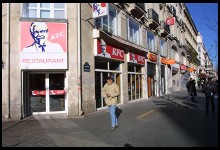 Contrasty scenes quickly overwhelm the standard 8
bits of the JPEGs. At right, for example, is a photograph of one of the 7
Michelin 3-star dining establishments in Paris. Notice how the subtleties of the
sign in front are washed out. This would have been a good time to use the RAW
mode. Unfortunately the RAW images have to be manually processed with
Canon-supplied software, whereas JPEGs can be batch-processed with ImageMagick
(the way that we've done the 10,000 or so images at photo.net; see
http://philip.greenspun.com/panda/images
for background on this subject). Below is another Parisian scene, the Centre
Pompidou, that suffers from the 8-bit limitation of the JPEG. If you'd taken this
scene with color negative film, a machine print might look similar to what you
see below but a custom print or a little work in Adobe PhotoShop would be able to
restore the the lost detail. If you originate 8-bit JPEGs in a digital camera,
though, the detail is lost forever.
Contrasty scenes quickly overwhelm the standard 8
bits of the JPEGs. At right, for example, is a photograph of one of the 7
Michelin 3-star dining establishments in Paris. Notice how the subtleties of the
sign in front are washed out. This would have been a good time to use the RAW
mode. Unfortunately the RAW images have to be manually processed with
Canon-supplied software, whereas JPEGs can be batch-processed with ImageMagick
(the way that we've done the 10,000 or so images at photo.net; see
http://philip.greenspun.com/panda/images
for background on this subject). Below is another Parisian scene, the Centre
Pompidou, that suffers from the 8-bit limitation of the JPEG. If you'd taken this
scene with color negative film, a machine print might look similar to what you
see below but a custom print or a little work in Adobe PhotoShop would be able to
restore the the lost detail. If you originate 8-bit JPEGs in a digital camera,
though, the detail is lost forever.
The D30 operates just like the other mid-range to professional EOS bodies. In manual exposure mode, shutter speed is set with the finger wheel by the shutter release while aperture is controlled by the thumbwheel on the back of the camera. In autoexposure mode, the priority setting (aperture or shutter speed) is set with the finger wheel, exposure compensation with the rear control dial. In program autoexposure mode, the finger wheel shifts the program.
Like the other fancy EOS bodies, the D30 facilitates simultaneous use of manual and auto focus. Using Custom Function 2, you can shift autofocus from the shutter release to the AE lock button on the rear of the body. (See the photo.net review of the EOS-5 for why this is so important.)
The controls are reminiscent of the EOS-5. There is a control dial on the top left, with "idiot" and "creative" modes. Sadly the middle position is not off; there is a separate on/off wheel on the back. The one really serious user interface lapse is that on the other side of the rear LCD panel is another small wheel labeled "on/off". This is the switch that turns the rear control dial on or off.
The camera is modeless, more or less. You don't go from "off" to either "camera" or "playback". If you want to review some pictures that you just took, press the review button on the back. Your old pictures will start appearing on the LCD screen. Is a French guy riding past on his bicycle with baguettes clamped in the back rack? You don't have to fumble for the "off/camera/playback" switch. Grab the camera and press the shutter release. The D30 will take the picture.
There is a dedicated depth-of-field preview button to the left of the lensmount. Missing features? If you're used to a point-and-shoot style digital camera, you'll miss the real-time image preview on the rear LCD monitor. Don't go looking for the button to turn this on. Remember that this is a single-lens reflex. If you can see the image through the viewfinder, that means there is a mirror in front of the sensor. Only at the instant of exposure does the mirror flip up and permit light to flow through to the shutter/sensor system. This lack of continuous sensing precludes the "panoramic assist" mode that is standard on point-and-shoot style digital cameras. You can still stitch together photos after the fact but you'll probably have to use a tripod to keep the horizon level.
 The full range of Canon
off-camera flash cords and flash control systems work with the D30. Sadly, you
don't get even the basic TTL metering with older EOS flashes such as the 540EZ.
You really need to use the newer EX-series flashes to get any camera control of
flash output. Here are some test images made by mounting
the MP-E 65 macro lens to a tripod, bayoneting the
D30 to the back of the lens, using "Off-Camera Shoe Cord 2" in the hot shoe, and
a 380EX flash to the upper left of the flower. To even out the light a bit, I
held the mostly-white back of D30 user's guide to the right of the flower as a
reflector. Holding the flash and the reflector used up both of my hands so I
turned on the D30's self-timer, which gave me 10 seconds to get the flash and
reflector into position before the camera exposed the image.
The full range of Canon
off-camera flash cords and flash control systems work with the D30. Sadly, you
don't get even the basic TTL metering with older EOS flashes such as the 540EZ.
You really need to use the newer EX-series flashes to get any camera control of
flash output. Here are some test images made by mounting
the MP-E 65 macro lens to a tripod, bayoneting the
D30 to the back of the lens, using "Off-Camera Shoe Cord 2" in the hot shoe, and
a 380EX flash to the upper left of the flower. To even out the light a bit, I
held the mostly-white back of D30 user's guide to the right of the flower as a
reflector. Holding the flash and the reflector used up both of my hands so I
turned on the D30's self-timer, which gave me 10 seconds to get the flash and
reflector into position before the camera exposed the image.

Use Custom Function 12 so that the SET button, when taking pictures, will let you change the ISO speed quickly. The native CMOS sensor is fairly slow, at ISO 100, and you'll want to be able to quickly push it into ISO 400 mode for indoor or shaded light. Only use the maximum ISO speeds of 800 and 1600 when stuck. Below are some comparisons of ISO 400 versus 1600. To my eyes, the ISO 1600 images have too much noise in the shadows.
| ISO 400 | ISO 1600 |
|---|---|
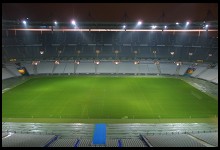
|

|
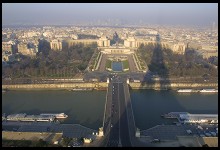
|
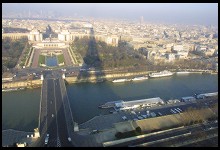
|
We recommend purchasing the BG-ED3 battery grip (about $200). It replicates the camera's most important controls for convenient vertical images and holds two BP-511 battery packs, the same as used by the camera. Canon says that each battery is good for making 540 photographs. The included battery charger system is so huge that you're probably better off stocking up on BP-511 batteries (about $60 each) and charging them all before leaving home.
For tripod photography, get a Canon electronic remote release switch. The self timer on this body operates with a fixed 10-second delay and cannot be set to 2 seconds as with most other Canon bodies. Thus it is annoying to use the self-timer as a pseudo cable release.
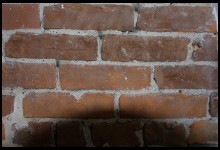 If you're using the 17-35mm lens and
relying on the on-camera flash as your primary source of light (i.e., you've not
read
the Light chapter of Making
Photographs), be sure to remove the lens hood. Otherwise you'll get a
dark shadow on the bottom quarter of the frame.
If you're using the 17-35mm lens and
relying on the on-camera flash as your primary source of light (i.e., you've not
read
the Light chapter of Making
Photographs), be sure to remove the lens hood. Otherwise you'll get a
dark shadow on the bottom quarter of the frame.
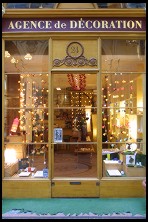 One glaring problem with the
EOS D30 is that it does not understand when it is being held vertically. Thus all
the portrait-format JPEGs, once transferred into Canon's little PC application,
are incorrectly oriented. You have to right click the mouse on every picture that
you exposed vertically and then select "rotate 90 degrees left". The actual
operation takes a few (long) seconds on a 700 MHz Pentium. There are plenty of
consumer-priced devices, e.g., the new Minolta Maxxum 7, that contain small
mercury switches to sense orientation with respect to gravity. Every digital
camera should have the ability to make an educated guess as to the correct
ultimate JPEG orientation.
One glaring problem with the
EOS D30 is that it does not understand when it is being held vertically. Thus all
the portrait-format JPEGs, once transferred into Canon's little PC application,
are incorrectly oriented. You have to right click the mouse on every picture that
you exposed vertically and then select "rotate 90 degrees left". The actual
operation takes a few (long) seconds on a 700 MHz Pentium. There are plenty of
consumer-priced devices, e.g., the new Minolta Maxxum 7, that contain small
mercury switches to sense orientation with respect to gravity. Every digital
camera should have the ability to make an educated guess as to the correct
ultimate JPEG orientation.
Another problem with the D30 is that the autofocus system is rather slow and stupid. The body has 3 sensors, comparable to the $250 Canon Rebel body, and overall AF performance seems similar. If you're accustomed to the 40 sensors and fast sure decision-making of the EOS-3 AF system, you will be unpleasantly surprised by the D30.
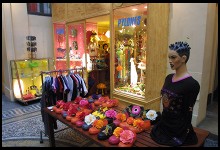 If you have a big
Canon EOS system of lenses and EX-series flashes, the D30 is a great camera. If
you don't own any Canon EOS products, you should probably consider
If you have a big
Canon EOS system of lenses and EX-series flashes, the D30 is a great camera. If
you don't own any Canon EOS products, you should probably consider
The D30 is stocked by Adorama, a retailer that pays photo.net a referral fee for each customer, which helps keep this site in operation.
One of the best things about a digital SLR with interchangeable lenses is the macro capability. Here we've hooked up the MP-E 65 macro lens again. The four images are (1) low-voltage living room light (3 seconds at f/11), auto white balance, (2) same light and exposure but tungsten white balance set explicitly, (3) 380EX off-camera flash, (4) 380EX off-camera flash plus reflector.
With an SLR, as opposed to a point-and-shoot digital camera, you can conveniently choose your shutter speed for best creative effect. In the image below, of a street merry-go-round set up next to Opera Bastille, the D30 was set at 1/6th of a second in order to blur the moving lights:
With the ability to slip into ISO 1600 at any time, the D30 makes a nice evening companion:
Text and photos (c) Copyright 2001 Philip Greenspun.